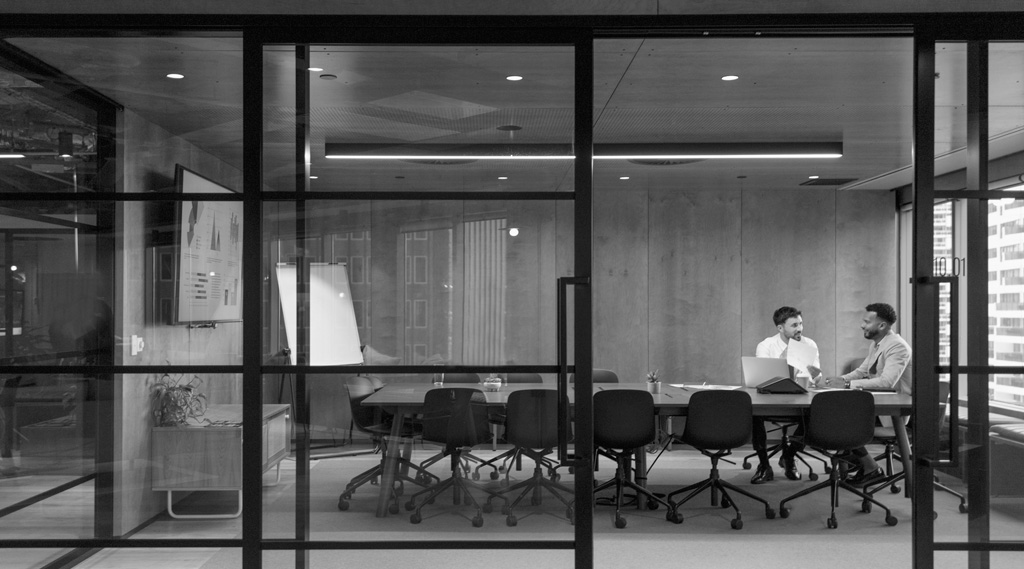Case study n°1
Retail: a reorganisation project, ad hoc consultation or consultation on strategic lines of action?

The firm advised a company that had submitted a reorganisation project during the annual works council consultation on strategic lines of action without also holding a specific ad hoc consultation meeting on this project alone.
The unions and employee representative bodies went to court to obtain an injunction to suspend the project until a specific consultation meeting was held.
For the first time, the Paris Court of Appeal found that including a specific project in the consultation meeting on strategic lines of action enabled the employer to comply with its consultation obligations prior to the implementation of the project, without it being necessary to schedule a dedicated consultation meeting. This decision was widely reported by the press.
Case study n°2
Global logistics: renewal of the elected membership of employee representative bodies
 The firm advised a leading global logistics company on the concomitant renewal of the membership of eight of the nine establishment employee representative bodies. The matter was complex on account of the 12 trade unions involved and the fact that 15,000 employees were impacted by the renewal of their elected representatives’ terms of office.
The firm advised a leading global logistics company on the concomitant renewal of the membership of eight of the nine establishment employee representative bodies. The matter was complex on account of the 12 trade unions involved and the fact that 15,000 employees were impacted by the renewal of their elected representatives’ terms of office.
The firm also advised on the election of the membership of the central employee representative body. A dedicated project team worked on this engagement for nine months.
Case study n°3
Communication: a combined substitute and working conditions agreement

The firm advised a company on negotiating a substitute labour-management agreement in connection with a merger.
The new agreement on employee status aimed to increase the number of days worked, in order to harmonise the working time of the personnel at the two merged companies.
In addition to the fact that negotiating an increase in working time is a relatively delicate matter, the negotiated agreement qualified as a company-level agreement on working conditions, which provided for the external mobility of employees who refused the new employee status agreement that was proposed.
Case study n°4
Healthcare: reorganisation, a voluntary redundancy scheme or a mass layoff
 The firm advised one of its clients on the reorganisation of its business, which involved the conversion of an establishment and a 50% reduction in force.
The firm advised one of its clients on the reorganisation of its business, which involved the conversion of an establishment and a 50% reduction in force.
Given the difficulties in recruiting employees in the sector and the local context, it was decided to negotiate and implement a voluntary redundancy scheme.
In addition to providing legal assistance and drafting the documents for the procedure, the firm advised the establishment on its relations with the administration. When preparing the project, it was necessary to convince the labour administration to approve this strategic choice and, following implementation, to obtain authorisation to terminate the employment contracts of employees who were protected from dismissal.
Case study n°5
Non-profit association: protection of competitiveness

The firm advised a non-profit association on the closure of several sites, which resulted in the implementation of a mass layoff scheme.
Several difficulties were resolved, such as whether the rationale of protecting competitiveness protection would withstand judicial scrutiny when applied in the non-profit sector, the scope of the consultation of the establishment employee representative bodies, etc.
There was also the issue of the application of the Florange Act regarding the search for an entity to take over the premises…
Case study n°6
Industry: company closure
 The firm advised one of its clients on a planned company closure in France, which involved implementing a mass layoff scheme, closing a factory and the loss of several hundred jobs.
The firm advised one of its clients on a planned company closure in France, which involved implementing a mass layoff scheme, closing a factory and the loss of several hundred jobs.
This matter was particularly delicate, as it received a great deal of media exposure, and the harm to the client’s reputation in the event of a dispute with the workers would have been disastrous.
From a technical standpoint, the company was confronted with the difficulty of defending the economic rationale, in the knowledge that the planned closure could have been obstructed by criminal and environmental law injunctions. The firm was able to assist its client in all phases of the negotiations while keeping lines of communication open with the trade unions and government agencies. For this matter, in the same way as for many others, the firm was able to find a solution that was in the interest of all the stakeholders.
Case study n°7
Healthcare: merger of two public hospitals
 The firm worked on the merger of two public hospitals in the Paris region. In addition to the extent of the merger (2,000 public sector employees were impacted), ærige’s lawyers had to show considerable awareness of the extent of the dialogue that was needed, given that the French Public Health Code requires more than just union and employee representatives to be involved. The firm consulted:
The firm worked on the merger of two public hospitals in the Paris region. In addition to the extent of the merger (2,000 public sector employees were impacted), ærige’s lawyers had to show considerable awareness of the extent of the dialogue that was needed, given that the French Public Health Code requires more than just union and employee representatives to be involved. The firm consulted:
– the authorities that provide funding, which had to issue a merger order (in particular the Regional Health Authority),
– the municipalities, which had to be consulted and vote on the plans;
– the internal representative bodies, in particular the employee representative bodies in both hospitals.
Case study n°8
An employee who was protected against dismissal: a judicial “saga”
 The firm advised a company during a veritable judicial “saga” caused by a an employee representative who was protected from dismissal: civil proceedings (interlocutory and on the merits) were followed by administrative proceedings.
The firm advised a company during a veritable judicial “saga” caused by a an employee representative who was protected from dismissal: civil proceedings (interlocutory and on the merits) were followed by administrative proceedings.
The firm was able to obtain a court decision which confirmed that implementing the processes that were applicable in the rest of the group when the company that employed this worker was taken over could not be equated to a change of the protected employee’s working conditions. In parallel, the firm defended the company in a dispute initiated on the basis of emotional harassment, and, in a third case, obtained authorisation from the administrative authority to terminate the protected employee’s employment contract, following an appeal to the Labour Ministry.
Case study n°9
An employee suddenly obtained protection against dismissal: another judicial “saga”
 The day before signing an agreement for the amicable termination of an employee’s employment contract, the employee decided to run in the workplace elections. This was of course a deal breaker.
The day before signing an agreement for the amicable termination of an employee’s employment contract, the employee decided to run in the workplace elections. This was of course a deal breaker.
The employee then sued their employer before the employment tribunal on the grounds of discrimination and emotional harassment. On the same grounds, the employee filed a criminal complaint. In parallel, the employee instituted proceedings before the social security courts to obtain recognition that an occupational accident had occurred.
All the firm’s specialised departments (employment law, criminal employment law and occupational health law) were mobilised to provide a comprehensive, appropriate response.
Case study n°10
An employer’s association: benefits and fitness for work

The firm advised a major employer’s association on reviewing the coverage of the risk of certain particularly exposed persons being found to be unfit for work.
This was a twofold engagement, as the aim was to incorporate this risk into the death and disability benefits scheme for the industry group, in consultation with an actuarial firm and insurers. The aim was also to optimise the implementation of employment law rules, including cash benefits, benefits in kind, preventive measures and training, in order to minimise the association’s risk exposure.
This matter illustrates ærige’s methodology, including leverage of cross-cutting expertise, and in-depth understanding of the most technical aspects of supplementary social security cover and employment law, which benefitted an industry group of 160,000 employees.
Case study n°11
Transport industry: training on psychosocial risk factors

The firm provided a half-day training course for the 1,800 managers of the group on the subject of the legal response to psychosocial risk factors. After reviewing the obligations that are inherent in the employment contract and the manager’s power, the training made it possible to identify the various psychosocial risk factors and to consider the best practices to be adopted in work settings where such risk factors are prevalent.
During the face-to-face training, in groups of 10, the sessions generated practical answers to the managers’ questions and extensive interaction through quizzes and roleplays.
Case study n°12
Supplies of services: unfair competition
 The firm advised a company on a dispute with a former employee in order to obtain the enforcement of a non-compete clause.
The firm advised a company on a dispute with a former employee in order to obtain the enforcement of a non-compete clause.
This case was unusual, as the proceedings were initiated by our corporate client, the employer, which summoned its former employee to appear before the employment tribunal and was seeking the cessation of the competing activity performed by the employee, who was bound by a non-compete clause.
The aim was for the former employee to be made to leave their new job, subject to coercive penalties.
Case study n°13
Public service: criminal employment law
 A company that performs a public service mission entrusted ærige with the legal protection of its field employees during the performance of their duties. The firm was selected on the basis of its specific expertise in this area.
A company that performs a public service mission entrusted ærige with the legal protection of its field employees during the performance of their duties. The firm was selected on the basis of its specific expertise in this area.
ærige advises the company and its employees on all stages of the procedures, from managing the filing of criminal complaints through to litigation support.
In view of the company’s public service mission, assaults are regarded as aggravating circumstances. More than 50 persons who work to provide a public service were able to benefit from effective legal protection while carrying out their field assignments.
Case study n°2
Construction: response to a fatal accident

ærige’s client employed a worker who suffered a fatal accident on the Greater Paris construction site. The firm’s assistance focused on the strategy for managing no-fault health and safety liability, as well as the consequences of the fatal accident.
The firm also advised the client during the criminal investigation, in particular the police interviews with the employees who held powers of attorney.
In addition to the media and financial stakes, the context was particular sensitive, as there had recently been two other fatal accidents on the same construction site.
